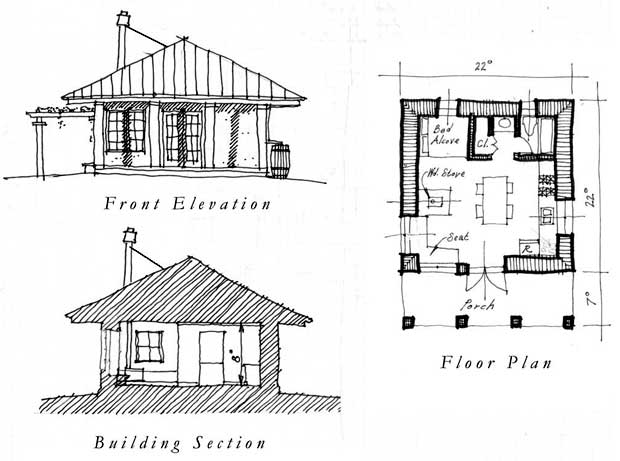Earth Home Plans & Designs
Building a basic, minimalist earth home is not a difficult task,
at least not for somebody who is prepared for this type of eco-friendly
dwelling.
Nevertheless, sometimes it is more beneficial to ask for help
from someone who has some experience in planning, designing and
eventually supervising the construction of an earth home.
Below is a list of some basic rules and that should be adhered
to if one wants to succeed at building an earth home.
How to plan and build a basic earth home?
- Finding the right kind of soil is the first requirement. The
soil must be sandy, but not all sand (ideally it should contain
between 50% and 75% of sand). This soil would later be compressed.
- It is necessary to sieve the soil through to get rid of larger
chunks of rock, stones, roots and other unwanted material. This
should be done very carefully, as the future durability of the
structures depends on it.
- Make sure that the soil is dry. According to the experts,
if the soil's moisture level is more than 10%, it will not compress
effectively.
- Prepare a good foundation. An ideal one would be a thick layer
of concrete that will separate the earth home from the ground.
Therefore, it will not be susceptible to the devastating effects
of water and frost.
- Construct a wooden framework, which will offer support to
the future walls of the house (plywood is usually a very good
material for this purpose). The shape in which the wood is placed
will determine the shape of the future walls and the way it
will look on the outside. Make sure to consult the plans carefully
in order to get the intended effect.
- Once the framework is done, you can start filling the space
inside with the building material (a slightly moist dirt/soil).
Adding special stabilizers will strengthen the whole construction.
Once the soil is spread, you can start ramming it until it is
very hard. This could be done manually (but is very laborious
and tiresome) or you can use some machinery.
- The walls that are exposed should be strengthened additionally;
they should be protected against the external influences (this
includes weather conditions, but also animals, insects, intruders,
etc.).
This rough guide to building an earth home covers only basic rules
of construction. Earth homes can have various designs. It all
depends on the vision and requirements of the owner. Earth homes
can be fully integrated into the natural environment. The designer
can arrange to have the earth home built near natural resources,
like streams, lakes, waterfalls or in the sides of mountains.

Further eco-friendly technological improvements can be employed,
for example solar panels, wind turbines or rain water collection
systems. Also, advanced building and design techniques make the
earth home responsive to the local climate. In the winter a well
designed earth home should be able to retain heat, while in the
summer it should be a cool place of respite.
Reasoning Reasonableness ...
Conservation of energy, low cost and having a low carbon footprint
are three of the main reasons people build earth homes. What is
your main reason?
|

